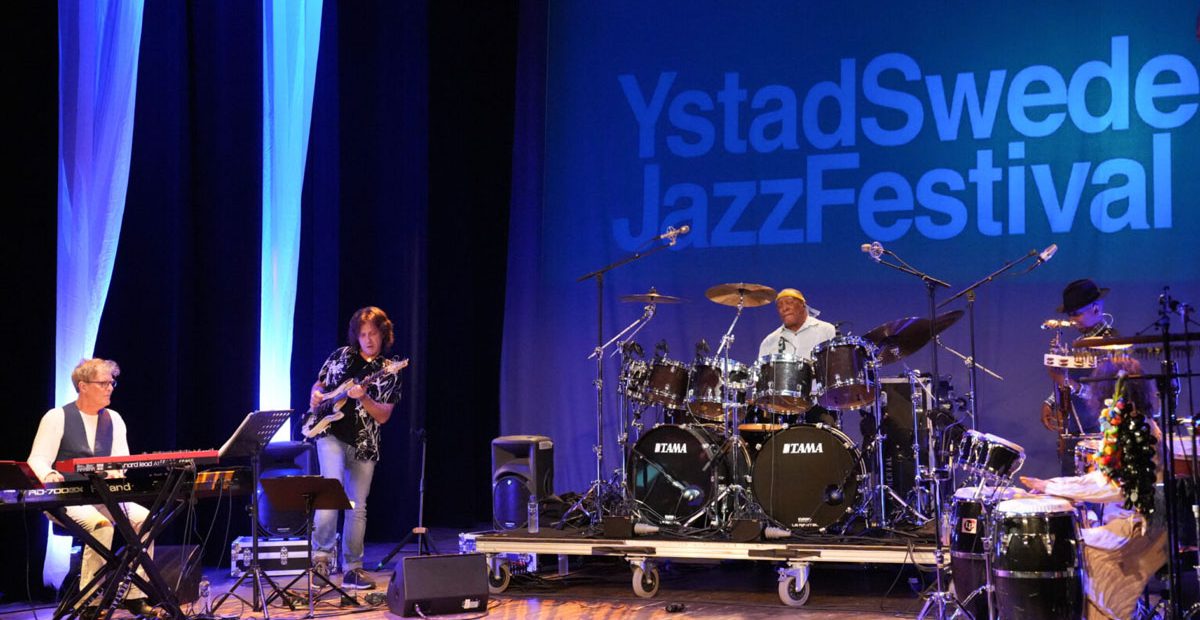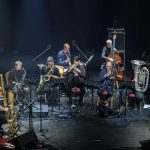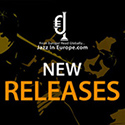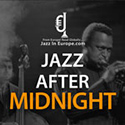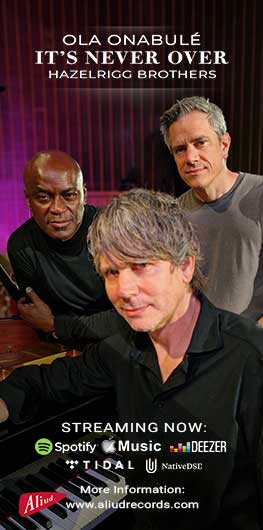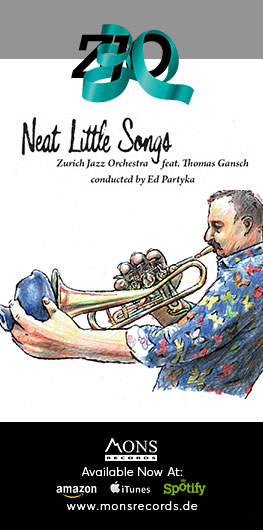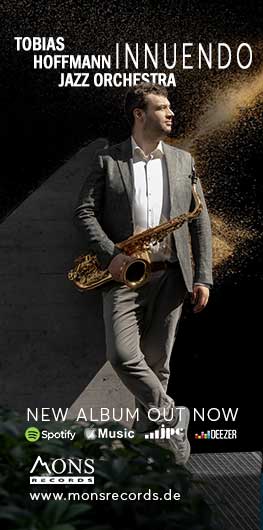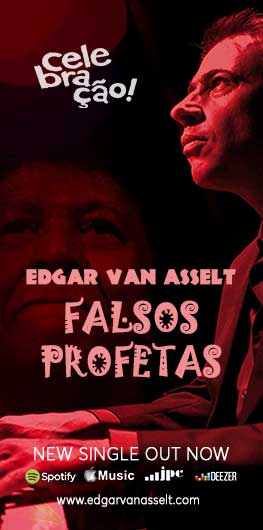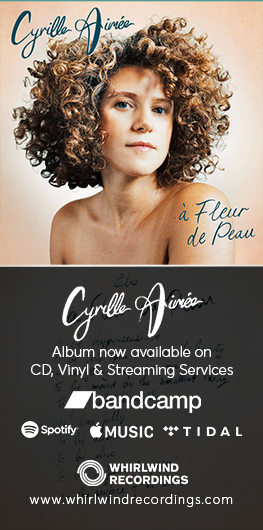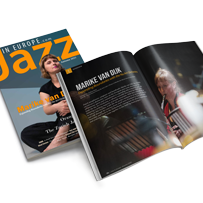With 15 years under its belt, the Ystad Sweden Jazz Festival has firmly established itself on the European jazz map. The festival organizers took this milestone as an opportunity to elevate the event in 2024, extending it from four days to five over the first weekend in August. The lineup featured heavyweight names that proved age is just a number. Both singer Sylvia Vrethammer and Brazilian superstar Joao Bosco are past 70, while drummer Billy Cobham, who delivered the final high-energy concert in the theater, celebrated his 80th birthday just a few weeks ago.
Before the festival began, seagulls were seen inspecting the flotsam, and geese flew in the sunshine along the Baltic Sea beach. Nothing in the picturesque town during summer evokes the gloomy atmosphere that Henning Mankell describes with his inspector Wallander. The opening concert took place at the elegant Saltsjöbad Spa Hotel, located directly on the beach. Clarinetist Ken Peplowski paid homage to Swedish clarinetist Putte Wickman. Trumpeter Bobby Medina, a frequent audience favorite, opened the first concert in the neoclassical theater, with his Latin American Jazz Experience serving as a lively warm-up.
However, it was unfortunate that he and his entire band took over the session evening, which is typically hosted by Jonathan Dafgård’s trio and features guest musicians like Gary Husband and Ulf Wakenius on the final night, turning it into a second concert. Multi-instrumentalist Gunhild Carling brought her entire family, and Jan Lundgren’s first concert of the festival was a two-piano duo with Lars Jansson. The highlight of the first day was the Late Night Concert featuring Spanish trumpeter and singer Alba Armengou. What a joy it was to hear her wonderful music in the monastery church, known for its long reverberation! The absence of the percussionist due to illness turned out to be a blessing, as the musical exchanges between Alba and her guitarist Vicente López became even more transparent. It was a wonderful conclusion to the first day of the festival.
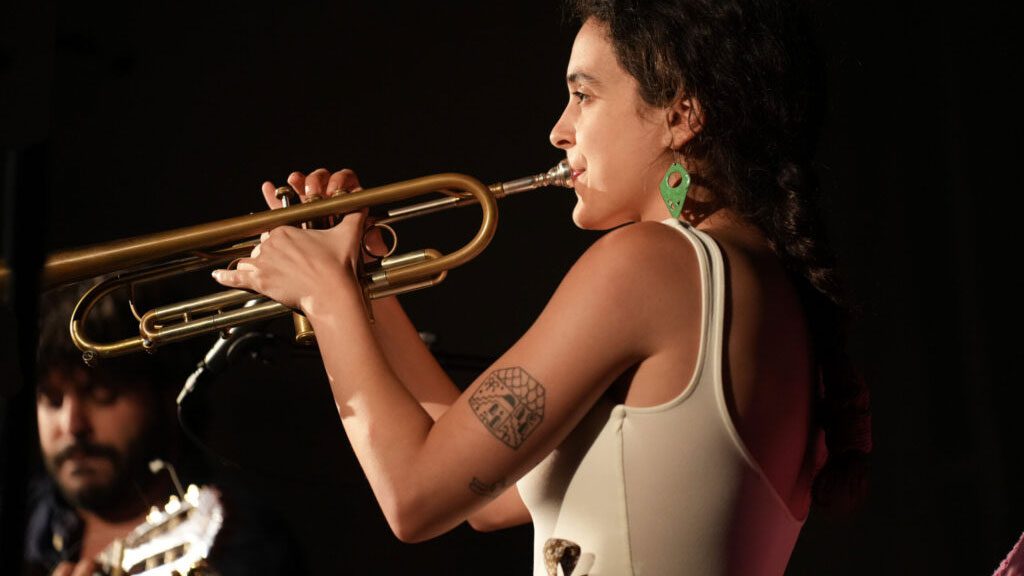
Alba Armengou Photo: Markus Fägersten
The next generation of Scandinavian jazz showcased their talents at the Danish café Hos Morten. While enjoying generous portions of smörgåsbord with shrimp, attendees discovered emerging talents, particularly Ebba Dankel, a singer and pianist with a scholarship to the Berklee College of Music. She and her trio delivered such a confident performance that she could easily be a contender in the ACT record label’s portfolio of Scandinavian musicians.
The second day was the most impressive. Danish harmonica player Mathias Heise, who had previously impressed me at the Estonian Jazzkaar Festival, was there with his energetic quartet Action 4. Their complex music was performed brilliantly and with so much energy, which stood in stark contrast to the statement, “this is only our second concert.” I would love to see this band live more often with their refreshing, contemporary fusion music. Rasmus Sørensen (keyboard), Conor Chaplin (electric bass), and especially Anton Eger (one of the most exciting drummers, and with his tennis outfit, probably the most eye-catching) energized the audience to a standing ovation as early as midday.
Brazilian singer-songwriter legend Joao Bosco made the audience’s hearts sing; his stage presence, instrumental skills on the guitar, and vocal qualities made it hard to believe he was 78 years old. However, his band, which played a supporting role, also deserves mention. For many years, Ricardo Silveira has provided tasteful electric guitar solos, Kiko Freitas typically plays with brushes on the drums, and bassist Gutu Wirtti completed the trio. Standing ovations and encores were a given after this emotional concert.
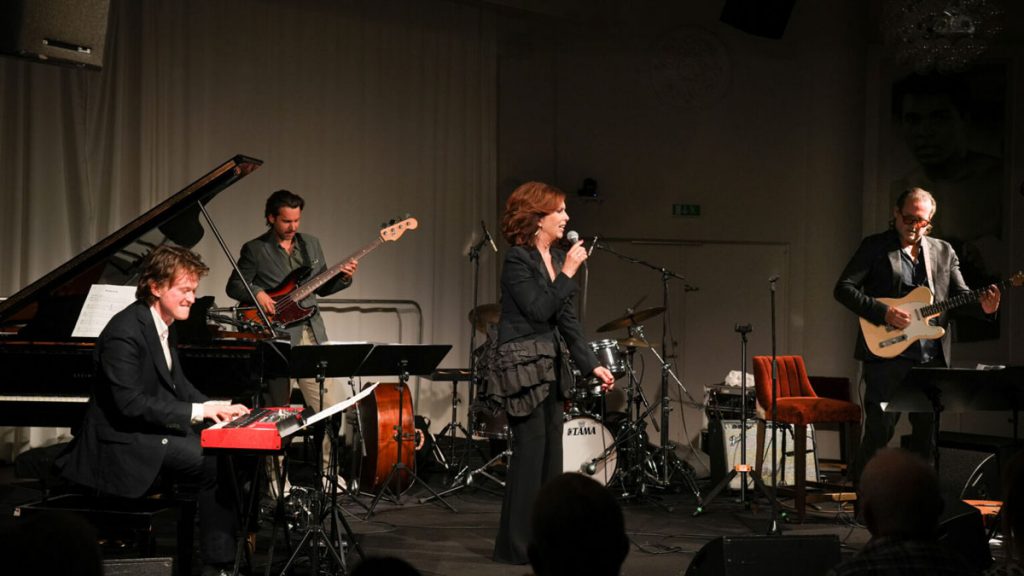
Sylvia Vrethammar Photo: Markus Fägersten
Sylvia Vrethammer, who became famous in Germany as a pop singer, as has been the case with many Scandinavian artists, seamlessly followed presenting pieces from her Brazilian journey, which she had taken with Toots Thielemans and Sivuca. Probably the highlight of the festival was the new band featuring Vincent Peirani and Émile Parisien. The quartet, simply called “Sissoko Segal Parisien Peirani,” merges two remarkable duos: accordionist Peirani and soprano saxophonist Parisien have played together for many years, as have cellist Vincent Segal and kora player Ballaké Sissoko from Mali. Here, the sum of 2 + 2 is much greater than four; the compositions were simply dreamy. The quartet conjured up musical moods and visions on stage, showcasing fine dynamics and articulation. The cello played North African melismas, the 21-string African bridge harp let cascades of notes flow, the soprano saxophone explored all its sound possibilities, and the accordion pulled out all the stops in the truest sense of the word. Joe Zawinul’s “Orient Express” was certainly one of the highlights of the concert program.
Day three was almost exclusively a Swedish festival day. In a secluded garden between roses and fig trees, bassist Hans Backenroth’s Trio Circle performed with saxophonist Magnus Dölerud and drummer Oscar Johansson Werre before trumpeter Karl Olandersson’s quartet took the stage at Saltsjöbad. The Esbjörn Svensson Trio, E.S.T., would have celebrated its 30th anniversary in 2024. Founded in 1994 by friends Esbjörn (piano) and Magnus Öström (drums), and later completed by bassist Dan Berglund, the Swedish formation had a meteoric rise. As one of the few European groups, they even made it to the cover of American Downbeat magazine.
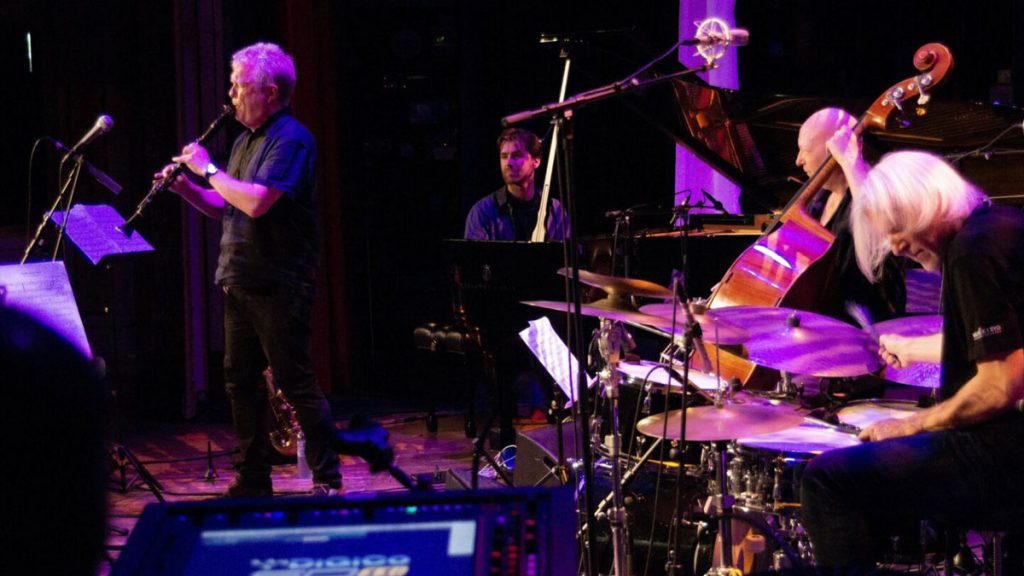
E.S.T Photo: Harri Paavolainen
Excessive touring and rapid CD releases left fans dizzy. The tragic diving accident of pianist Esbjörn Svensson in 2008 plunged fellow musicians and fans into deep mourning. For the 30th anniversary, Magnus Öström and Dan Berglund invited guest musicians to celebrate Svensson’s simple yet catchy compositions. Whether Frederik Ljungkvist and Verneri Pohjola were the best choice is debatable. At the Jazzbaltica Festival in late June, the concept worked better with other soloists. Unfortunately, the piano (Joel Lyssarides) was drowned out by a booming bass.
Saxophonist Andy Sheppard presented his music calmly and with much more space in the trio setup of bass-piano-saxophone. His composition “Three Hills,” dedicated to the view from his window and composed of just three notes, resonated beautifully in the three-part organ pipes of the Maria Church. The festival concluded with a Swedish (and Brazilian) flavor, as Jan Lundgren invited Yamandu Costa, who had delivered an electrifying solo concert two years prior. The Brazilian, with his seven-string guitar, is a phenomenon. He effortlessly navigated the most challenging passages, energizing both the pianist and the entire theater. Melancholic pieces and exuberant choros alternated before “Manhas de Carnaval” by Luis Bonfa provided a fitting encore.
The following day, it was difficult to pinpoint why the Austrian band J.D. Hive did not resonate with the audience during their performance of “Isn’t Dinner Lovely Tonight.” Violinist Johannes Dickbauer had a fantastic band, and the compositions were engaging, albeit almost too complex. The personal family stories behind the pieces were touching, yet the spark just didn’t ignite. With Sarah McKenzie, it was only I who felt the disconnect; the Australian singer and pianist can play and sing anything, and with Ulf Wakenius, she had a strong soloist by her side, but she felt somewhat subdued in her overly arranged pieces.
The final concert in the monastery church was anything but subdued. On paper, the duo Siqueira Lima didn’t quite fit into a jazz festival. The two guitarists met in a competition, had to share the prize, fell in love, and have since been touring as an impressive duo, though they do not play improvised music. However, their selection of Latin American pieces by Astor Piazzolla, Baden Powell, and Heitor Villa-Lobos captivated the audience. Cecilia Siqueira and Fernando Lima also fulfilled Jan Lundgren’s encore request with their rendition of “Tico Tico,” played four-handed on a single guitar. That was hard to top, but the entire region knew what to expect after the afternoon soundcheck in the theater with open doors: Billy Cobham’s Time Machine.
In May, the drummer turned 80, and he walks better with a cane, but once seated behind his impressive drum set with two bass drums, there’s no stopping him. This influential musician shows everyone where the hammer—or rather, the drumsticks—hang. Together with his long-time collaborator Gary Husband (on keyboards, which is worth mentioning since Husband is also an excellent drummer), guitarist Rocco Zifarelli, bassist Michael Mondesir, and lively percussionist Marco Lobo, Cobham delivered an electrifying set that included his most famous piece, “Red Barron,” which would challenge many younger musicians.
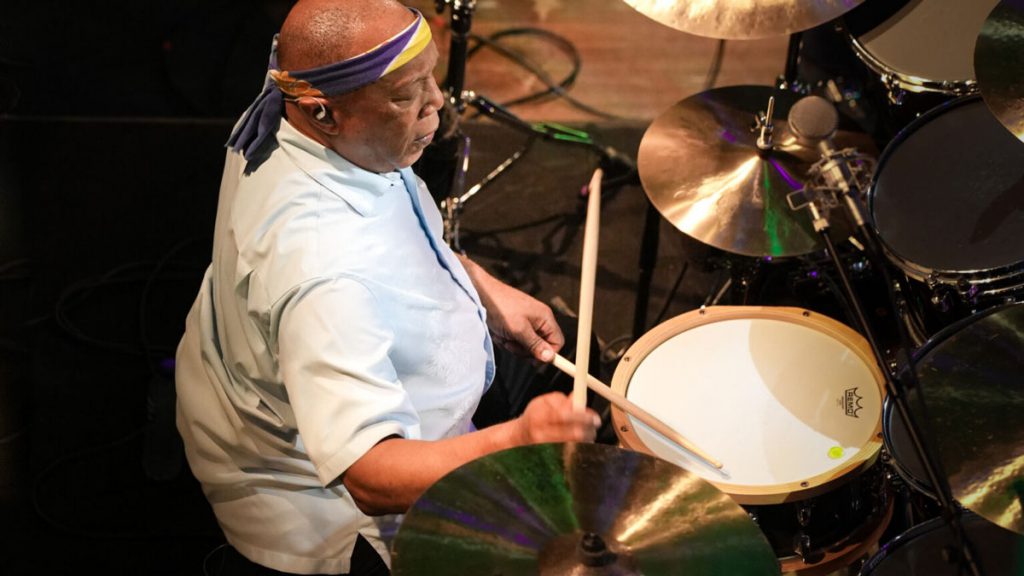
Billy Cobham Photo: Markus Fägersten
The anniversary edition gained an additional day at a new location: a large Sunday open-air concert took place in front of Charlottenlund Castle. Two Swedish big bands and the Icelandic group Mezzoforte were scheduled to perform before picnic blankets. Unfortunately, during Mezzoforte’s “Garden Party,” a sudden downpour occurred, but it did not dampen the mood. It’s fascinating that a band that has been around for nearly 50 years and whose mega-hit is now 41 years old can still sound so fresh and timeless.
The geese and ducks that listened to the jazz-filled afternoon on the lawn in front of Charlottenlund Castle moved on in the evening, perhaps already heading south… or maybe just to the next jazz festival. A big shout-out and thank you go to everyone involved: Jan Lundgren as artistic director, Thomas Lantz as festival president, and the many unnamed helpers who provided invaluable support throughout the event. They were easily recognizable in their black and pink outfits (the festival branding was truly successful; on the last day, the pink rain poncho became a popular merchandise item). In addition to the ushers and vendors, there is also the core planning group, the helpers who assist and transport the musicians, and the busy crew in Maria’s Cantina, which is always set up on the third floor of the theater during the festival, ensuring that technicians, helpers, and musicians have meals and coffee available at any time of day.
However, in conclusion, a small note of concern remains: please include more women in the program! This was already a point of criticism two years ago, and while the presence of artists like Alba Armengou, Gunhild Carling, Cecilia Siqueira, Rita Marcotulli, and singers like Sylvia Vrethammer or Viktoria Tolstoy is commendable, it does not adequately represent the strong female side of jazz today!
Last modified: August 22, 2024


